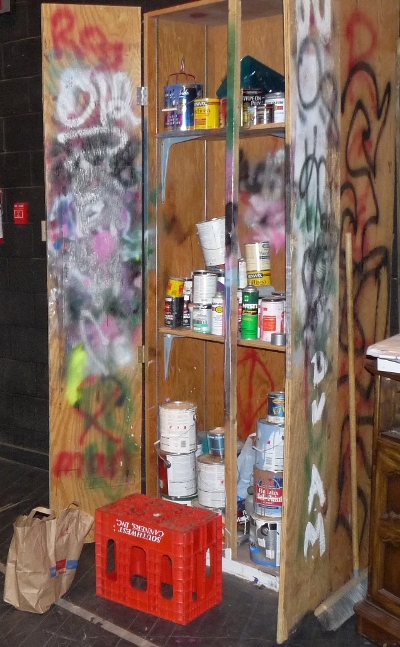 We've all done it. If you look around right now you'll probably see one, too. Plugging one extension cord into another extension cord may seem like a minor issue, but each time you plug stuff together you add a little more resistance into the power line. More resistance means more heat generated and more voltage drop at the far end of the cord. If the device(s) you are powering don't get the voltage they want, they may demand more current, and when they do that, then the heating in the cord goes UP and the voltage goes DOWN. Kind of a vicious cycle.
We've all done it. If you look around right now you'll probably see one, too. Plugging one extension cord into another extension cord may seem like a minor issue, but each time you plug stuff together you add a little more resistance into the power line. More resistance means more heat generated and more voltage drop at the far end of the cord. If the device(s) you are powering don't get the voltage they want, they may demand more current, and when they do that, then the heating in the cord goes UP and the voltage goes DOWN. Kind of a vicious cycle. |
| Relocatable Power Tap (Plug Strip) |
| Rack-Mounted Relocatable Power Tap (Plug Strip) |
Also note that a Relocatable Power Tap is intended only for indoor use as a temporary extension of a grounding alternating-current branch circuit for general use.
Do
• Do inspect an extension cord for physical damage before use.
• Do check the wattage or current rating on the appliance or tool that the extension cord will be used with; do not use an extension cord that has a lower rating.
• Do make sure all equipment and extension cords bear the mark of an independent testing laboratory such as UL, ETL, CE, TUV, etc.
• Do make sure the plug on an extension cord is fully inserted in the outlet.
• Do replace an outlet (receptacle) if a plug is too loose and can easily fall or be pulled-out.
• Do match up the plug and extension cord on a polarized cord (one hole on the plug is larger than the other).
• Do keep extension cords away from water.
• Do use GFCI (Ground Fault Circuit Interrupter) protection when using extension cords in wet or damp environments or in areas considered construction sites like the scene shop and stage.
• Do keep extension cords away from children and animals.
• Do pull on the plug, not the cord when removing an extension cord from the outlet.
• Do store extension cords indoors (UV light damages the plastic casings).
• Do unplug extension cords when not in use.
• Do keep slack in flexible extension cords to prevent tension on electrical terminals.
• Do use cable pathways to cover cables passing through walk areas.
• Do use high temperature cord sets for stage lighting circuits.
• Do put safety covers on the unused receptacle outlets on extension cords.
Don’t
• Don’t use an extension cord marked for indoor use outdoors.
• Don’t plug one extension cord into another.
• Don’t overload cords with more than the proper electrical load.
• Don’t run extension cords through doorways, holes in ceilings, walls, or floors.
• Don’t move, bend, or modify any of the metal parts of the extension cord plug.
• Don’t plug a three-prong into a two-hole extension cord.
• Don’t force a plug into an outlet.
• Don’t use an extension cord when it is wet.
• Don’t overheat an extension cord.
• Don’t cover an extension cord with anything.
• Don’t drive over an extension cord - especially with hard wheel devices like Fork Lifts.
• Don’t drag an extension cord.
• Don’t attach extension cords to the wall with nails or staples.
• Don’t run extension cords under rugs or carpets or in high traffic areas.
Other Resources:
Extension Cord Facts: www.generalcable.com/NR/rdonlyres/AEFA0995-ADF0-4AA8-96F4-E3CB20FF72AA/0/Pg92_Extension_Cord_Facts.pdf
Underwriters Laboratory: www.ul.com/global/eng/pages/offerings/perspectives/consumer/productsafety/cords/
Wikipedia:
Power Strip: http://en.wikipedia.org/wiki/Power_strip
Extension Cord: http://en.wikipedia.org/wiki/Extension_cord













